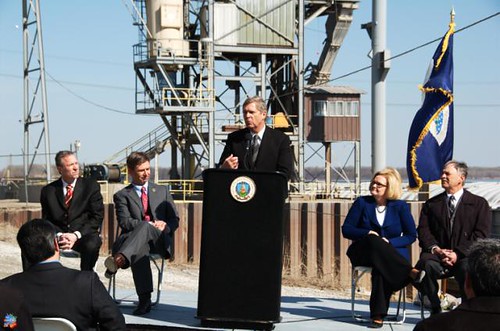
Agriculture Secretary Tom Vilsack spent part of last week in St. Louis, Mo., making several stops to promote trade and agriculture and to announce the opening of a new office in St. Louis for the USDA National Agricultural Statistics Service.
With grain barges and a grain elevator as his backdrop, Vilsack spoke to a crowd of Missouri’s agriculture leaders about the important passage of the U.S.-Korea Trade Agreement.
“Within 500 miles of St. Louis, farmers are producing more than three quarters of the nation’s corn and soybean crops, injecting $75 billion into the global economy and supporting 265,000 jobs for this region,” said Vilsack. “At the heart of the nation’s farm economy, St. Louis and this region are pumping life into the national economy. Farm exports alone will support more than one million jobs in America this year. And every dollar in exports generates another $1.21 in economic activity. Congress can help U.S. farmers and ranchers sustain their record growth by passing smart trade deals like the U.S.-Korea Trade Agreement, which will increase exports and support job creation here at home.”
Secretary Vilsack was joined on the podium by U.S. Senator Claire McCaskill, Dr. Jon Hagler, director of the Missouri Department of Agriculture, Mike Baroni, vice president of economic policy, Archer Daniels Midland Company, and Jim Fisher, a pork producer from Middletown, Mo. Fisher said the agreement would benefit U. S. pork producers by increasing hog prices and creating jobs in the pork industry.
“To remain competitive, we have to get this U.S.-Korea trade agreement passed,” Fisher said.
Following his remarks, Secretary Vilsack served as the keynote speaker at the St. Louis Agribusiness Club lunch meeting. Later in the day he traveled to the location of a new National Operations Center of the USDA’s National Agriculture Statistics Service. Secretary Vilsack joined U.S. Senator Roy Blunt and other regional officials, to announce the new operations center will create more than 350 local jobs and reuse an existing federal facility which formerly housed a federal Military Records Center.
